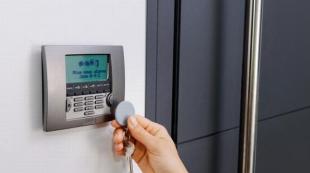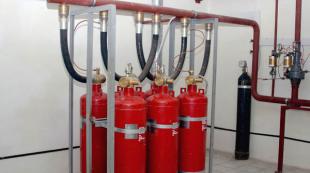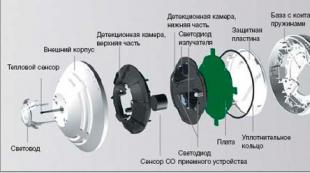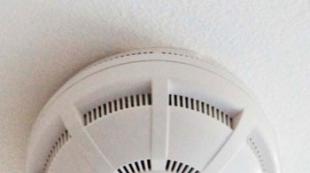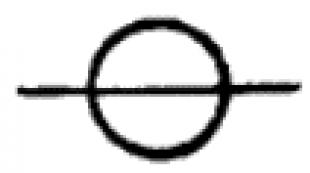Installation of digital terrestrial television. Setting up digital terrestrial television Moscow region.
Want to watch your favorite high-quality TV channels for free? Use the digital service terrestrial television DVB T2. In many countries, this standard has already become the main one over the past few years. Unfortunately, in Russia it is just starting to gain popularity. Today, the 20 most popular Russian channels are already available, and in the near future, the organization responsible for the development of technologies promises to add another package of channels.
If you need to pay a monthly monthly fee for cable television, the benefits of digital terrestrial television are obvious - only once you pay for a set of equipment, after about a year its cost is fully paid off and in the future you watch TV for free. In addition, it is very rare to need the entire channel package that is provided by cable or satellite providers.
In today's article, we will tell you in detail what features the DVB T2 digital terrestrial television service has, as well as what you need for self installation and equipment settings. When you arm yourself with knowledge, installing on-air antennas will be very simple and you can save significant money by refusing to call the wizard. So let's get started.
More recently, terrestrial television has been associated with poor image quality, a large number of different interference, as well as a minimal set of channels. It was necessary to manually tune each frequency individually, while different channels could work in different ranges, which led to the fact that it was necessary to install several antennas or one multi-band. In some cases, additional information could come along with the signal, for example, teletext, when it was possible to receive information about a TV show or various entertainment content directly on the TV screen. Today, in the era of the Internet, such additional services have lost their relevance, but in the era of high-quality video and high-resolution screens, high-quality television picture has become more in demand than ever. Therefore, a standard for digital television was developed.
It is the use of digital technology that allowed us to reach a whole new level of quality. If earlier it was necessary to use exclusively satellite television for this, which entailed additional installation difficulties, and not everyone could afford a set of equipment, now it’s enough to install and configure an almost ordinary UHF antenna, in some cases an amplifier, as well as a television set-top box. And when you consider that many modern tvs Since they already have a built-in DVB T2 receiver, you can do without one inexpensive antenna.
Let's take a closer look at the advantages and disadvantages of T2 digital terrestrial television.
Benefits:

Despite the huge number of advantages, there are a number of certain disadvantages:

The state of digital television in Russia
In some ways, Russia lagged behind other European countries. They have a television format DVB T2 long ago became generally accepted standards and many where analogue broadcasting is not conducted at all. In Russia, today is a transitional stage when everyone realizes the need to abandon analog television, but the digital infrastructure is still underdeveloped. In general, in most large cities, you can easily figure out the number, but if you live in very remote regions, you will either have to be content with one multiplex, or just be patient. Fortunately, there are practically no such places left, the signal covers, by and large, all settlements.
Now let's talk about filling channel packets or, as they are officially called, multiplexes. Today it broadcasts 2 multiplexes of 10 channels each. In the coverage area of \u200b\u200bDVB T2 digital terrestrial television, the reception of the first multiplex is guaranteed, while the second is not yet available everywhere. There is talk of launching the third package, but due to the lack of frequency resources and the need to free up frequencies for it by disabling analog broadcasting, the launch date is still unknown.
What channels are included in each package? At the beginning of May 2017, their composition is as follows:
Note that the multiplex content is not constant and changes from time to time. Over the past few years, this has happened several times. In any case, the set is quite diverse and provided channels for every taste and for any audience.
Necessary equipment
So, what equipment should be purchased to watch DVB T2 digital terrestrial television? Depending on the equipment you already have and the distance from the transmitting center, you may need this set:
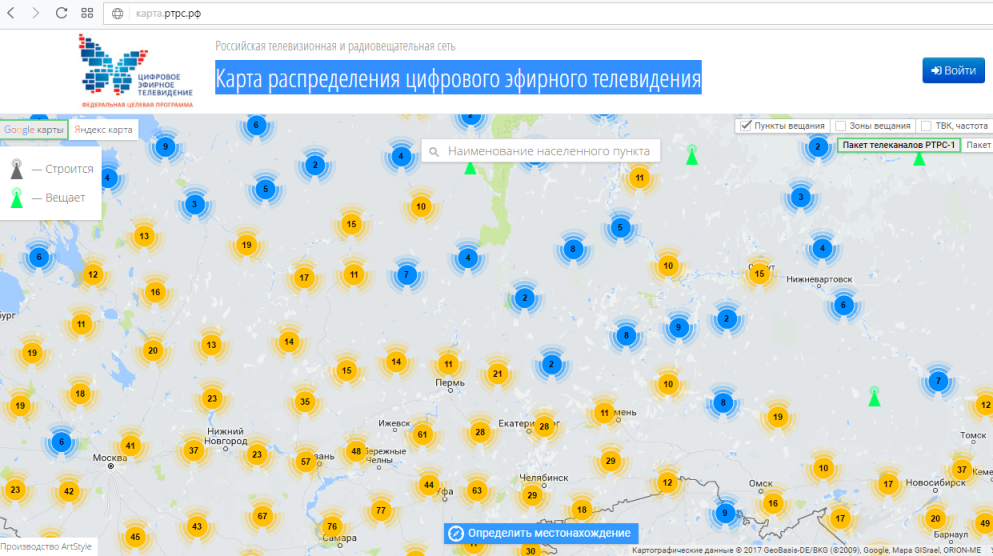
Antenna installation
In one article it is almost impossible to list all the special cases and conditions of admission. Therefore, we will give only general recommendations that should be considered when installing a DVB T2 digital television antenna.
Room
Place the antenna on the windowsill and rotate it towards the transmitting tower. Make sure there are no radio sources nearby, such as a Wi-Fi router. The distance between them should be at least several meters.
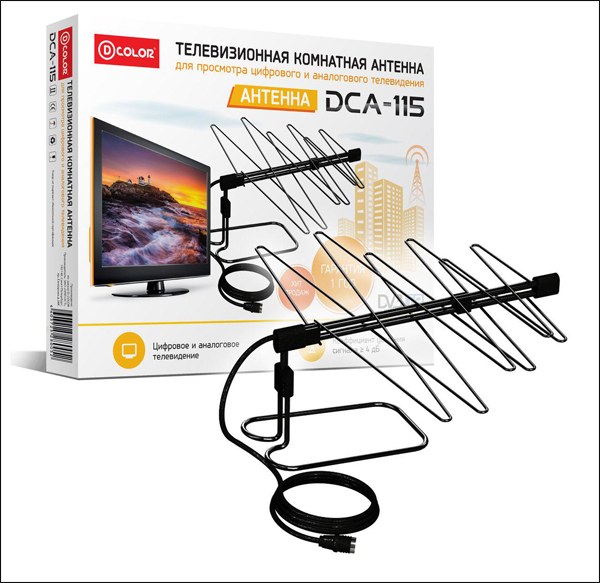
Outdoor
External antennas also need to be turned towards the tower and securely fixed so that the wind or other weather conditions could not violate its position. It is best to first install a reliable bracket and attach it to the wall or roof of the house, and already attach the antenna to it. This will allow you to vary the position of the device. When installing, be sure to note that for fine tuning you will have to rotate it, so do not fix it right away, it is better to do this after the full installation is completed.
- Do not rush to use the amplifier. Try experimenting without it at first. Twist the antenna or move it a little to the side, sometimes it can help a lot. If all else fails, then only turn on the amplifier.
- If you plan to use several televisions, the antenna must be outdoor. By the way, in this article you can learn how to connect several TVs to one antenna.
- Minimize situations where the signal is shielded or blocked. For example, do not place the antenna under a metal roof or near a multi-story building that blocks the tower, as well as high-voltage lines. True, in some cases, you can use the signal reflected from the high structure and amplify it with an amplifier.
Fine tune signal quality
You can, of course, accurately capture the signal proper strength and quality on their own, without the use of additional equipment. Nevertheless, in difficult reception conditions, it is best to use a special device to tune in the air antennas. What is such a device? Usually this is a small box with a mechanical dial or LCD screen, which displays the signal strength. On the one hand, power is connected, and on the other, an input for connecting the antenna cable is provided. Since tuning the antenna for visual perception of the image on the screen is not the most reliable, such a device will greatly simplify your task.
- Take the device and connect the antenna cable to it, and also supply power either from the built-in batteries or from the external battery pack.
- Turn the antenna towards the receiver. In the case of the correct orientation, the device will immediately begin to emit a sound signal, and the numbers or arrow run on the scale.
- If the device shows an insufficient signal level, reposition the antenna by turning to the side, lifting it higher or lower. Get the maximum signal performance.
- Turn off the device, fix the antenna and you can proceed with the settings of the equipment.
Connecting the antenna to the TV
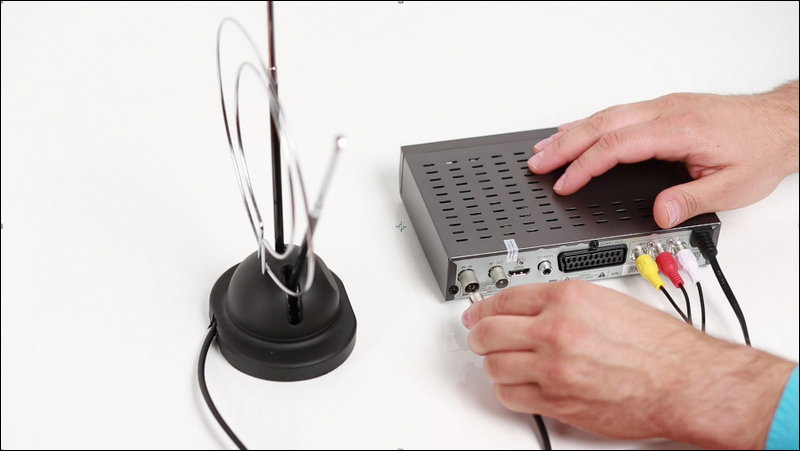
With a built-in DVB T2 receiver
- Find on your TV a special input for connecting an external antenna. It is usually signed by Ant In.
- Connect the cable from the antenna to this connector. At this time, the TV must be turned off for safety reasons.
- Turn on the TV and in the settings activate the digital tuner.
- Perform an automatic channel search.
- Enjoy watching.
When using a digital set-top box tuner
- Connect the cable from your antenna or amplifier to the antenna input on the set-top box.
- Connect the set-top box to the TV. Ideally, this should be an HDMI cable, as it provides the highest quality video signal. If this interface is not available, connect the two devices through traditional analog connectors, the so-called tulips. There should be 3, they are indicated in different colors. Usually it is yellow, red and white. Two of them are audio jacks, while the third is video. Most often, the connectors on the TV and on the console have the same color designation, so it is quite difficult to confuse them.
- Turn on the TV and using the remote control remote control select the external source to which the tuner is connected. It can be either HDMI or AV. It all depends on the connection method.
- Search for TV channels automatically or tune each one manually.
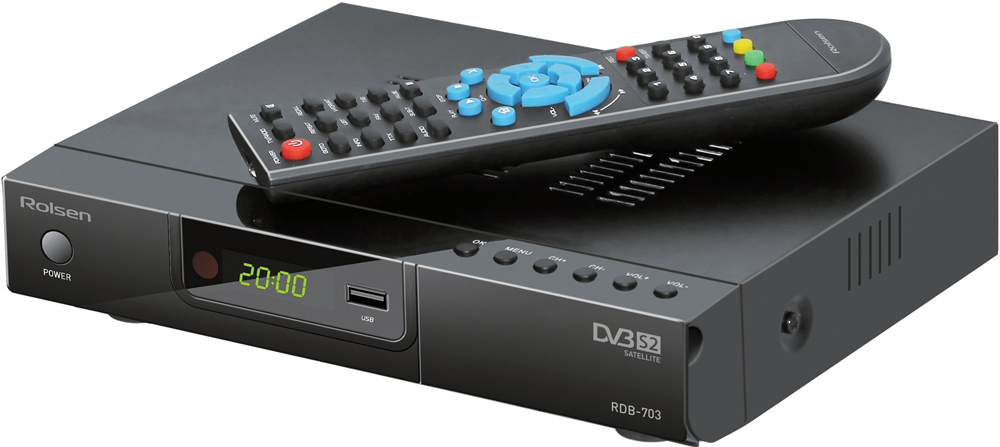
Conclusion
We showed you a detailed step-by-step guide on how to install and configure DVB T2 digital television. Now you can watch up to 20 free channels without any problems. If you still have questions, or something doesn’t work out, ask in the comments or contact our masters.
Next-generation digital terrestrial television comes to every home. Installing modern equipment at home opens up a host of new opportunities, significantly improving the quality of the received television signal. DTV is a technology for broadcasting images, transmitting sound on television channels. Its main feature is the compression of video information in such a way to deliver it directly to the receiver. Broadcasting provides minimal data loss compared to traditional analogue technologies. Pictures, sound are not subject to any extraneous influences, therefore everything is displayed extremely clearly and very clearly on the screen. Therefore, you can say goodbye to the traditional problems of broadcasting.
The main benefits are obvious:
- installation of the antenna at minimal cost, once installed and no need to pay more;
- connecting a large number of TVs to one antenna with standard wiring;
- setup and further operation does not require large expenses and a monthly fee;
- installation is possible even on the wall of the house or on the roof, depending on the signal level.

The current digital terrestrial television has long been a familiar occurrence. By 2015, a significant part of the regions already has transmitters for connecting subscribers. Large-scale reconstruction of the network began 3-4 years ago, and since then it has been possible to take a serious step forward. In the near future, it is planned to disable the analog broadcasting system and a complete transition to digital. The transmitted signal in an innovative format is distinguished by another major feature - it has a higher bandwidth and can carry additional data. Thanks to this, more television channels are broadcast on digital terrestrial television.
Free on-air digital channels of Ostankino, two multiplexes RTRS-1 TVK 30, RTRS-2 TVK 24
- First
- Russia 1
- Russia 2
- Petersburg
- Culture
- Russia 24
- Carousel
- REN TV
- Home
- Sport plus
- Star
- MUZ TV
Antenna installation, connection, tuning
When installing standard equipment in Moscow and the Moscow Region, two multiplexes of 20 TV channels and 3 radio are received. Details can be found at any time on the official website. It is also possible to contact the equipment supplier and installer who is ready to make the connection. The company holds a large staff of skilled craftsmen with professional equipment and experience in installation of various levels of complexity. Additional services for cable laying, high-altitude work are provided at a reasonable price. Consumables and equipment sold receive a guarantee from an official manufacturer.
Setting on-air digital TV format in Moscow.
What is a digital terrestrial television setup ( CETV
On-air digital television is a special method for transmitting television images and sound, in which high-quality the reception a large number of channels. Unlike the analog format, on-air digital, with the right settings, delivers the signal almost without loss, because when transmitted to the image and sound, the weather conditions are not affected.
Tuning the channels of terrestrial television:
To view and configure digital terrestrial television channels, the following conditions must be met:
- availability for admission a collective or indoor broadcast antenna;
- the presence of a TV that supports the ability admission digital terrestrial signal in the format DVB-T2/Mpeg4;
- digital availability receiver consoles (receiver) DVB-T2/Mpeg4 (provided that the TV does not have a function admission broadcast signal of this format)
We offer to become the owner of the console for admission broadcast digital format. Thanks to the device, you can feel all the advantages of the new broadcasting, moreover When setting up, the brand and model of the TV are completely unimportant.
Recently, digital terrestrial television has been steadily entering our lives, and such popularity is explained by the high quality of broadcasting and numerous channels. When setting up digital terrestrial TV, you can use the same equipment (cable, divider and antennas) as with analogue television. True, there is some difference in the setting. If your TV does not support the digital playback function, have to purchase a separate set-top box - receiver. Digital tuner It is inexpensive and, if properly configured, will provide high-quality broadcasting.
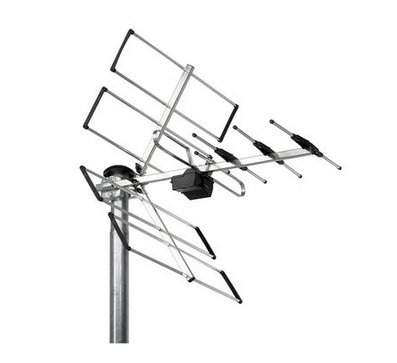 Initially, broadcasting of digital terrestrial channels was carried out in the DVB-T format using decimeter waves. But not so long ago, it was decided to configure the signal in a different standard —
DVB-T2. Today it is a modern broadcast format. Atateme The signal is applied decimeter antenna. Choosing and setting such an antenna, it should be remembered that digital television requires enough high level incoming signal. That is why it is best to use a narrow broadcast antenna with a large number of directors and a high gain when tuning.
Initially, broadcasting of digital terrestrial channels was carried out in the DVB-T format using decimeter waves. But not so long ago, it was decided to configure the signal in a different standard —
DVB-T2. Today it is a modern broadcast format. Atateme The signal is applied decimeter antenna. Choosing and setting such an antenna, it should be remembered that digital television requires enough high level incoming signal. That is why it is best to use a narrow broadcast antenna with a large number of directors and a high gain when tuning.
The advantages of digital terrestrial television format DVB-T2 a lot, including:
- Security image and sound quality when properly configured.
The quality of analog television at the output is quite high, but for a number of reasons (due to incorrect settings) it reaches its consumer with great noise and in poor quality. Susceptibility to various weather and other conditions creates a lot of interference, not only the image but also the sound is deteriorating, it is impossible to view some channels. As for digital terrestrial broadcasting, this format does not have such a drawback; broadcast quality is always remains high moreover even despite a small level admission signal.
- A large number of received channels. Ethereal digital television format and the reception receivers use digital format when compressing digital image and sound DVB-T2 MPEG4, which the gives possibility of increasing admission channels in one multiplex.
- High quality admission signal when properly configured. Remains in passed m mthe notion that for a good signal you need to install the antenna as high as possible. Thanks to the digital terrestrial prefix DVB-T2 possible to get quality television image and sound at a minimum height (on the 1st floor of the building).
- Efficiency and ease of connection and configuration. Connect and configure digital terrestrial television format can almost everyone, for this you only need to purchase a receiver and fulfill the connection conditions in accordance with the instructions.
- Availability.
To configure and install the receiver there is no need to purchase and install additional lines and wires. You can connect the device to any television receiver, which has Dmv the antenna. All this gives the ability to watch programs in high quality not only in the city, but also in the country.
Accessible to all viewers, the installation of a TV antenna allows you to receive digital television in Moscow, broadcasting is carried out in the dvb-t2 standard. The analogue broadcast system is a thing of the past and will be permanently disabled in the near future. The reason for this is the improvement of radio frequency technology. If earlier there were no more than 18 programs from the Ostankino tower, then by 2016 it’s already 30. Channels work in digital mode and are grouped in 10 at the same frequency, this package is called “Multiplex”.
- The first multiplex Ostankino TVK 30, frequency 546 MHz
- The second multiplex Ostankino TVK 24, frequency 498 MHz
- Test third multiplex Ostankino TVK 34, frequency 578 MHz
For local repeaters, broadcast settings may vary. The decree of the Government of the Russian Federation provides for the universal launch of twenty federal, free channels. The towers under construction and functioning in the Moscow Region can be found in the right block of the current page.
The advantages of digital terrestrial television
Maintenance free
Television, installed in compliance with all the rules, serves for a long time without service maintenance.
A large number of TVs can be connected to one antenna with serial cable routing.
Digital quality
Image without interference and distortion with digital transmission system DVB-T2 and support for high resolution.
No monthly fee
Free television shows all federal channels, officially launched 20 programs and 10 in test mode.
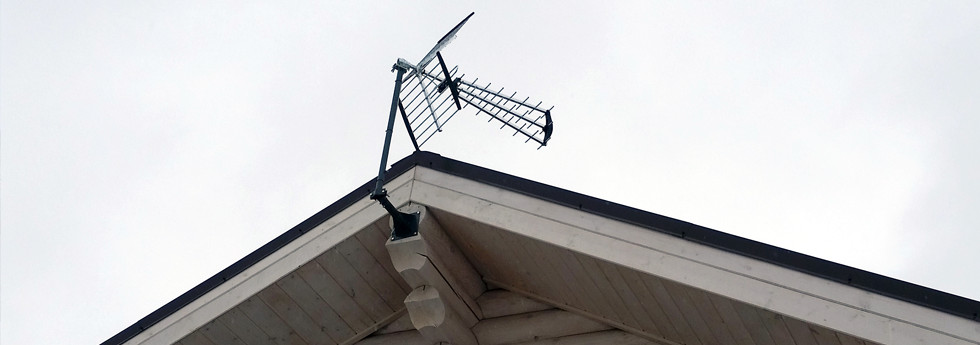
![]()
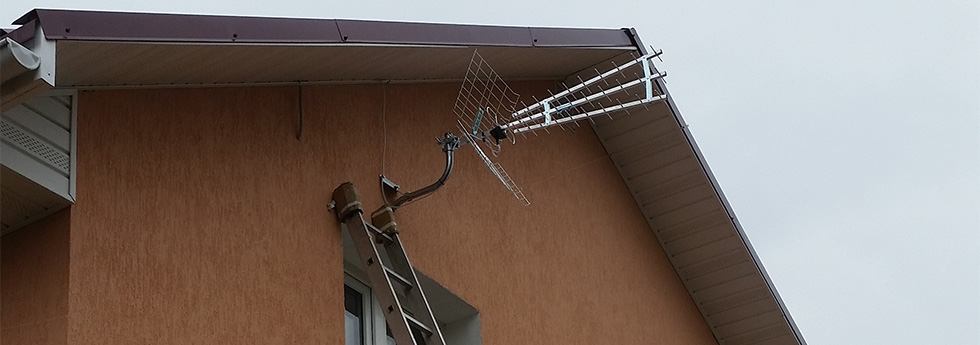

Digital TV reception in Moscow is possible on any TV, with the difference that for older models you will need a dvb-t2 receiver. This is a small set-top box with a separate remote control through which control is conducted. The signal from the antenna is fed to the receiver, and you can connect it to the TV with the cord “tulips” or “scart”. How to configure the receiver is described in the user manual. In the new types of flat TV panels, the tuner is already built-in, look for the dvb-t2 indication in the specifications and try to find the digital channels. If it doesn’t work, check the cable connection and find out if you can have regular cable television in your home.
Television Equipment Kits DVB-T2

Price 5 500 rub.
To begin, discuss with the operator by phone the main nuances - the address where you want to connect the television; installation conditions; number of televisions; departure day.
Next - departure of the master
The master comes with a set of equipment and tools, if necessary, you can order a long staircase - 7m. or 10m. The device measures the signal and offers a suitable kit.
Then - installation of the antenna
The standard installation of the antenna is carried out on the wall of the house, in difficult cases, it is possible to mount on the roof using standard structures - an air duct or other pipe.
Then - wiring connection
A television cable is put into the house. Usually, during repairs, an internal wiring is laid in the rooms and a branch is brought out onto the street. Switching is carried out using an amplifier and dividers.
The result - job acceptance and payment
The final step is to test the signal at the outlet of the television outlets, connect the TVs and configure the channels. Payment on the spot upon completion of work.
